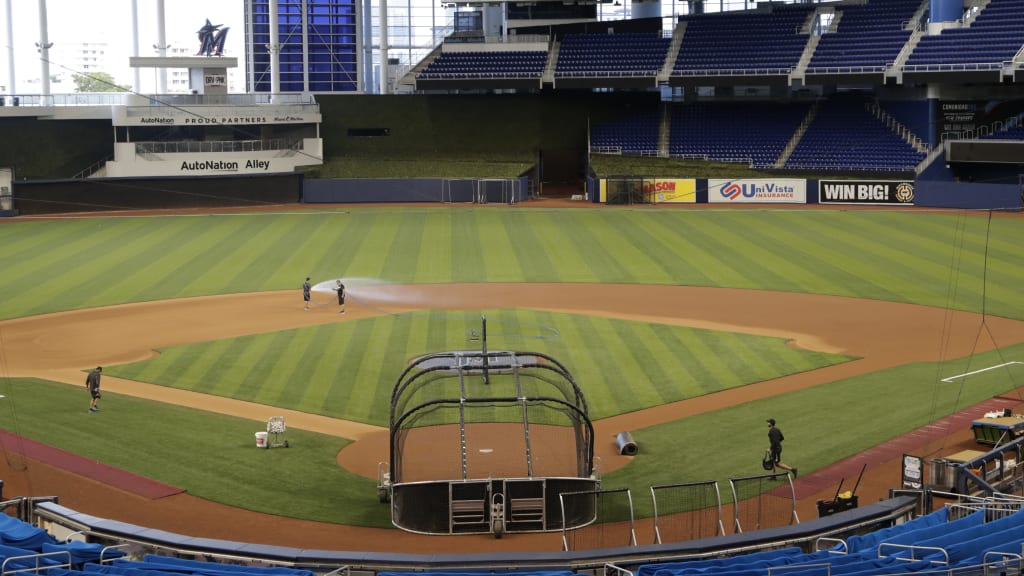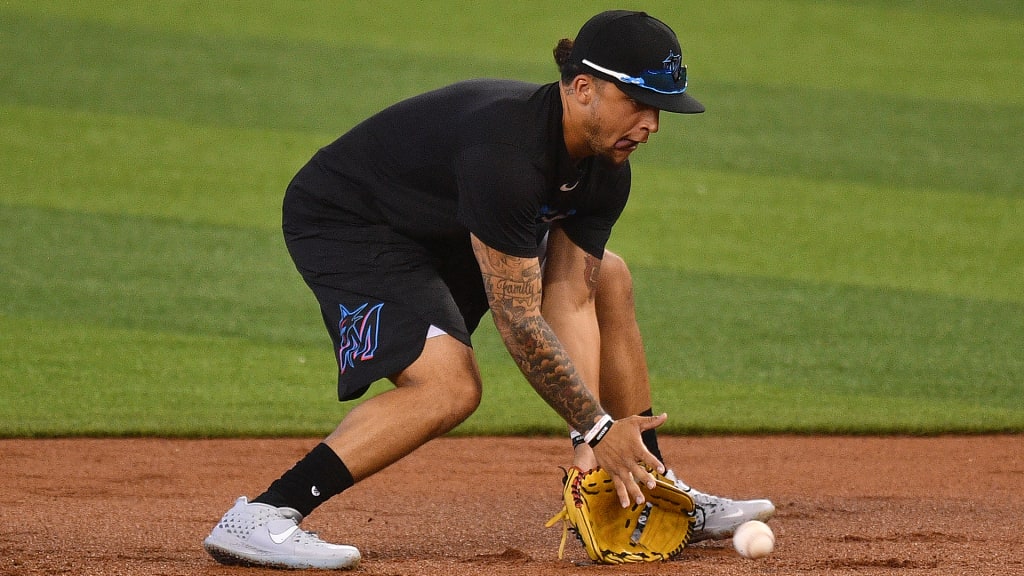
MIAMI -- Adapting to new MLB health protocols isn't the only adjustment the Marlins are making at Summer Camp.
The players and staff also are acclimating to revisions to Marlins Park, which has a new synthetic playing surface and shorter outfield dimensions in center and right-center field.
Friday marked the Marlins' first Summer Camp workouts since MLB shut down on March 12 due to the coronavirus pandemic.
For the first time since Marlins Park opened in 2012, there will not be natural grass. It has been replaced by the B1K: Batting A Thousand by Shaw Sports Turf.
The Marlins, D-backs and Rangers are the three clubs with parks using B1K, a state-of-the-art surface that closely resembles real grass.
“The turf is awesome,” shortstop Miguel Rojas said. “As a shortstop, I like the fact that it's not much different than actual grass. I was concerned after Spring Training was over that I wasn't going to have that much time to practice and get used to the grass.”
With the Marlins conducting Summer Camp at Marlins Park for the next three weeks, the players now will have the benefit of getting used to the new surface before Opening Day on July 23 or 24.

Summer Camp gives the Marlins' players a chance to get adjusted and help break in the surface.
“One of our staff members [bullpen coach Wellington Cepeda] was with Arizona last year when they got that turf, and he said it took a little while to get it broken in,” Marlins manager Don Mattingly said. “I think this timeframe on us should be good to get it broken in a little bit, and to get used to it.”
In the few first days of camp, the Marlins intend to take it easy with the players on the surface.
“It’s something that we are keeping an eye on, though, because we want to be very careful with our guys early on with soft-tissue stuff,” Mattingly said. “So we’re going to try to limit what we’re doing with guys out on that turf.”
As the Marlins ease back into playing shape, they are doing so in groups.
On Friday, roughly 25 players worked out in two sessions at Marlins Park. The early afternoon group had about 18 players, with the rest taking the field in the middle of the afternoon.
Rojas and second baseman Isan Díaz were part of the first group. After stretching and batting practice, the two middle infielders fielded ground balls on the new surface.
“It was great, actually,” Díaz said. “I liked it. It is obviously a little bit different, compared to the grass. I think there will be some adjusting.”
Rojas has been on the surface many times. In the weeks leading up to the relaunching of the sport, he was part of a limited number of players who worked out at the ballpark.
“I've been taking grounders on it,” Rojas said. “I've been using spikes and I've been using plastic cleats. It's not a big difference from regular grass.”
After testing out different cleats, Díaz said he likely will wear spikes.

The outfield dimensions also will be a factor at Marlins Park, which has been one of the toughest ballparks to hit homers in since its inaugural season in 2012.
For the second time since the ballpark opened, the outfield walls at Marlins Park have been moved in. Center field went from 407 feet to 400 feet and right-center from 399 feet to 387 feet.
“I feel like it's going to be exciting for players who fly out to right-center,” Rojas said. “That happened to us a lot last year. I think that's going to be an advantage for us. The pitchers are going to have to keep the ball down, because [the ball] can fly now.”


